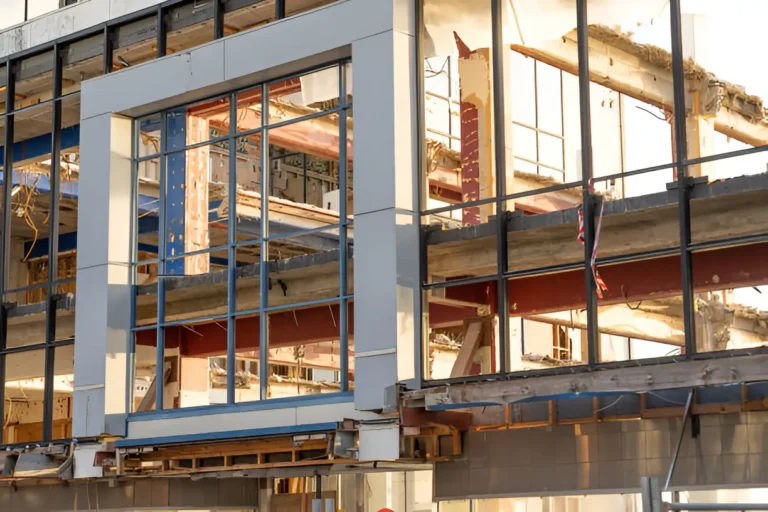Demolition in the modern construction and renovation industries has moved beyond the brute-force tactics of the past. The days of loud crashes, uncontrolled dust, and widespread destruction have been replaced by a carefully calculated craft. Professionals now utilize surgical-grade equipment instead of sledgehammers, guided by a new standard: precision. This transformation is more than cosmetic; it’s fundamentally changing how projects are planned, executed, and completed. From bathroom renovations to addressing buried utility infrastructure, modern removal techniques prioritize structural integrity, minimize damage, and enhance safety. Nowhere is this more evident than in the growing demand for interior tear down, the delicate process of removing interior structures without disrupting the rest of the space.
Not Just Demolition, It’s Controlled Deconstruction
The term “demolition” may still evoke images of wrecking balls and destruction, but that couldn’t be further from what’s happening on today’s job sites. Controlled deconstruction focuses on isolating the elements that need removal, walls, fixtures, concrete slabs, and outdated infrastructure, while preserving the surrounding environment. The key lies in doing it efficiently, quietly, and with minimum disruption to the rest of the structure.
For homeowners, this might mean renovating a kitchen while living in the same home. For city engineers, it could involve updating underground access points without disturbing surrounding pavement or utilities. Precision methods offer a level of control that allows one part of a structure to be surgically removed while the rest stays untouched and fully operational. This is where expertise makes all the difference; careful measurements, cutting-edge equipment, and a step-by-step plan replace guesswork and brute force.
When Innovation Meets Infrastructure
Technology is now central to how structural removal is approached. Specialized cutting systems, vacuum-assisted debris collection, and dust-suppression tools help workers complete tasks faster and cleaner than ever before. But where these innovations shine is in infrastructure repair, a field once notorious for being slow, loud, and destructive.
Take manhole rehabilitation as a prime example. Traditional methods involved jackhammering away concrete, removing and replacing entire assemblies, and repaving the surrounding surface. It was costly, time-consuming, and often left behind uneven repairs. Today, modular cutting systems and guided tools allow crews to work with precision, removing only the necessary layers and installing new components flush with the road. The turnaround time is drastically reduced, and the results are more durable and aesthetically consistent. This streamlined process is showcased in detail at the mrmanhole.com website, where efficiency and engineering come together to redefine underground repair work.
A New Focus on Safety and Sustainability
Precision demolition isn’t just about better tools; it’s about a smarter mindset. At the forefront of this is safety. With tighter job sites, older buildings, and more complex systems, each phase of removal must be thoughtfully executed. Today’s crews undergo thorough pre-planning, reviewing blueprints, conducting site scans, and identifying risks before the first cut is made. This proactive approach protects workers, clients, and the structure itself.
Just as important is the growing push for sustainability. In years past, construction debris was treated as trash. Now, many materials, wood, concrete, steel, and even cabinetry, are reclaimed, recycled, or repurposed. Smart deconstruction separates salvageable elements during removal, cutting down on landfill waste and reducing material costs for future builds. Clients are increasingly drawn to this eco-conscious approach, recognizing both its environmental and economic benefits.
Interior Work with Surgical Precision
Interior demolition, in particular, demands a unique level of care. Beneath every surface lies a web of wires, pipes, and ducts that, if disturbed, could derail an entire project. That’s why top-tier removal teams approach interior work more like surgeons than construction crews. They study what’s behind the walls, use imaging tools if needed, and plan cuts to avoid damaging crucial systems.
Instead of knocking everything down and dealing with the fallout later, experienced crews create clean work zones, minimize dust with HEPA filters, and isolate their operations from occupied areas. This is especially important for projects in homes, schools, or healthcare facilities where safety and cleanliness are paramount.
Clients often remark on how different a professional interior removal job feels, less invasive, more respectful, and significantly cleaner. It’s not just about what gets removed; it’s about how it’s done.
A Smarter Way to Build by Breaking
What’s emerging across the industry is a new understanding: precision isn’t a luxury, it’s a necessity. As projects become more complex, buildings more interconnected, and clients more discerning, the demand for clean, thoughtful removal will only grow. Whether it’s a homeowner prepping for a remodel or a contractor upgrading urban infrastructure, the expectation is no longer “just get it out of the way.” It’s “do it with care.”
Modern structural removal is now a cornerstone of quality construction. It saves time, preserves value, and creates a safer, cleaner, more sustainable process from start to finish. What used to be the noisiest, messiest part of any build is quickly becoming one of the most sophisticated, and that’s a change worth celebrating.
Read more: Behind the Walls: The Hidden Craft of Power and Data That Keeps Modern Life Flowing
How to Turn a Backyard into a Resort-Style Pool Paradise Without Leaving Home
